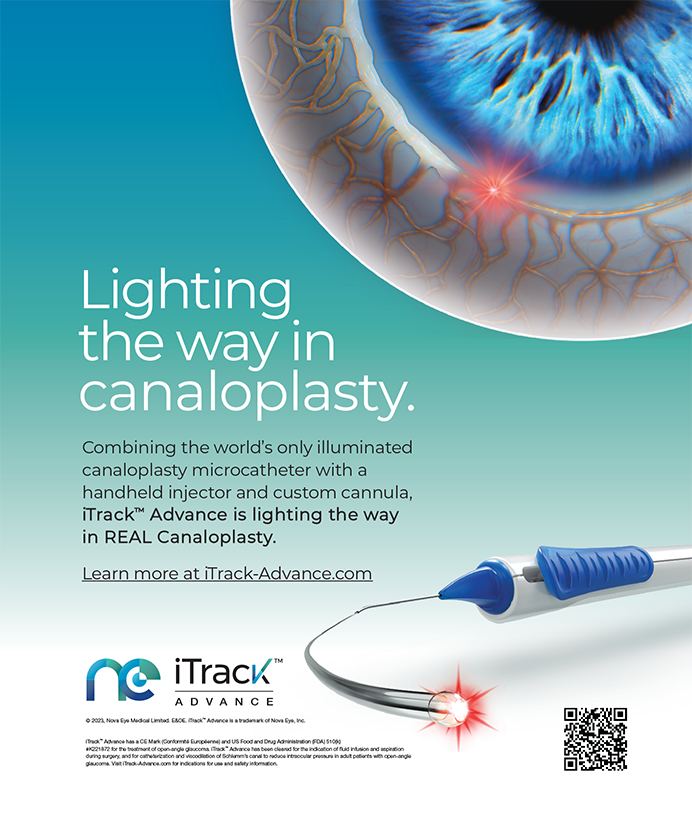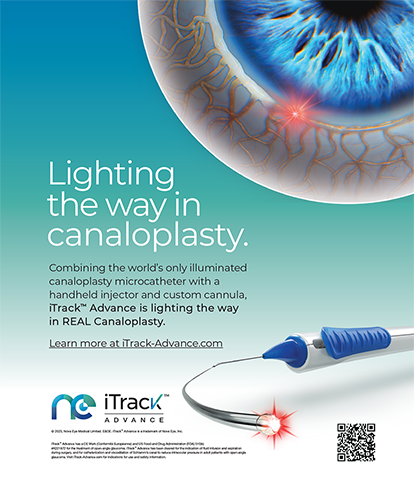My refractive surgery career began in 1984, so I had the opportunity to experience ?old PRK? during the early 1990s. The problems that accompanied early PRK gave surgeons many reasons to abandon this procedure in favor of LASIK. I can remember PRK patients vomiting in the waiting room due to a combination of pain and narcotic side effects. I also remember patients presenting with central corneal scarring so dense that only the most optimistic of surgeons could call it ?haze.? Why, then, would one want to return to such a procedure? Because today's PRK is vastly improved, and LASIK, as it turns out, has its own set of flaws. The list below explains why you should expand your use of ?New PRK.?
1. No bad flaps! PRK eliminates the risk of buttonholed or transected flaps. Consider PRK for very flat corneas or for uncooperative patients who might precipitate suction loss during midpass.2. Easily manage terrible exposure. Even the most cooperative patient can become a challenge when presenting with (1) deep-set eyes, (2) a narrow orbital opening, and (3) a short horizontal lid fissure. Three strikes and you're out! Choose PRK.
3. Avoid striae and folds. Thin flaps and flaps laid back over high corrections are at risk for striae. Even a perfect flap can be knocked loose. Consider PRK if the patient is at a higher risk for trauma (such as wrestlers, boxers, and martial arts students).
4. Eliminate DLK. Consider “New PRK” in patients with rosacea meibomitis, after aggressive efforts to treat the lids and quiet inflammation have been undertaken.
5. Maximize your treatment zone. Some cases call for larger zones. With PRK, even 9-mm hyperopic cases receive 100% of their laser effect without losing spots due to spillover or masking. Myopic patients with large pupils can be treated using PRK without any concern for excessive corneal thinning.
6. Minimize the risk of iatrogenic ectasia. I always leave at least 300 µm in the LASIK bed. On average, PRK adds 100 µm to the supporting postoperative corneal tissue (160 µm flap – 60 µm epithelium = 100 µm stromal difference), which makes it ideal for cases that require greater ablation depth, cases of thin pachymetry, and/or eyes with a high refractive error and thin cornea.
7. Avoid epithelial slough. Epithelial abrasions can be more than just a pain in the neck. They can trigger DLK, lead to striae, or deposit epithelial cells in the flap interface. PRK is therapeutic for patients with poor epithelial adhesion.
8. Eliminate epithelial ingrowth. In PRK cases, we welcome epithelial ingrowth! Epithelial regrowth is the first critical stage of healing in PRK—the sooner, the better.
9. Avoid post-LASIK dry eye. PRK avoids the loss of corneal sensation created by the LASIK flap. I consider PRK for patients with moderate dry eye, but only after using punctal plugs and artificial tears to eliminate SPK.
10. Provide a “no flap, just zap” alternative to patients. Many patients—including many ophthalmologists and optometrists—fear the potential side effects and complications of the LASIK flap. We educate patients about both techniques, and many choose “New PRK” because of its safety and simplicity.
FIVE STEPS TO BETTER REFRACTIVE RESULTS
The factors that make “New PRK” both new and improved include comfort and healing. In performing 25 LASEK procedures, I found that patients experienced slightly more discomfort and required more time with bandage contact lenses than my PRK patients. These findings encouraged me to revisit the PRK procedure. The following factors illustrate the improvements of “New PRK”:
Step 1. I returned to PRK using an epithelial loosening solution (20% alcohol, borrowed from the LASEK technique). Applying the solution for 25 seconds easily removes the epithelium. I then create a precise cuff of epithelium with a sharp edge, using an optical zone marker. This eliminates the trauma of scraping away adherent epithelium.
Step 2. I perform ablation using the LADARVision excimer laser system (Alcon Surgical, Fort Worth, TX). The system's small spot scanning technology delivers much less energy per pulse compared to the old large area ablation lasers. More importantly, it creates a much smoother corneal surface than the lasers that were used with “old PRK,” which helps to facilitate rapid epithelialization and decrease the occurrence of corneal haze.
Step 3. I apply a “healing modulator” to reduce the risk of epithelial fibrosis that causes haze: I use 0.02% mitomycin C (MMC) with a 6-mm corneal shield. MMC is only used in cases with ablations equal to or greater than 50 µm. I do not allow any MMC to come into contact with the limbus so as not to delay re-epithelialization. After 2 minutes, I irrigate the MMC from the eye using 20 mL of BSS (Alcon Surgical).
Step 4. Another considerable improvement in “New PRK” is the availability of modern soft contact lens technology. Today's lenses are much thinner and more oxygen-permeable than contact lenses of the past. My staff and I take great care to fit the bandage contact lens correctly. A lens that is either too loose or too tight will delay re-epithelialization and increase patient discomfort.
Step 5. A fifth improvement in “New PRK” is pain control. We ask patients to use unit-dose Acular (Allergan, Inc., Irvine, CA) between one and three times per day as needed for pain. If the Acular does not bring comfort, we allow patients to use unpreserved tetracaine only once per day. We do not prescribe any oral pain medications. Only one in five patients feels the need to use tetracaine; most return it unopened. With this improved regimen, the majority of patients present on the first postoperative day with eyes that are white, quiet, and pain-free.
IN SUMMARY
The loosening solution, scanning laser, healing modulator, improved bandage lenses, and better analgesia produce a ?New PRK? that involves less corneal trauma, a smoother surface, less risk of scarring, faster re-epithelialization, and improved patient comfort. So, am I ready to drop LASIK in favor of PRK? No, but after performing 8,000 LASIK cases, I have learned to spot the factors that make LASIK less desirable. In these special circumstances, I quickly and confidently turn to ?New PRK.? In my practice, I perform about one out of every four cases using this technique.
I do not claim that our improvements solve every problem; even “New PRK” has risks, complications, and side effects. Nevertheless, “New PRK” is sufficiently improved to merit selection over LASIK in certain situations. This is a great time for refractive surgery as PRK, LASEK, and LASIK continue to evolve and improve. Ongoing innovation and competition will benefit both refractive surgeons and our patients.
R. Bruce Grene, MD, is in private practice at Grene Laser Center in Wichita, Kansas, and serves as CEO of Grene Vision Group. Dr. Grene may be reached at (316) 691-4444; rbgrene@earthlink.netNote from John F. Doane, MD, FACS, Chief Medical Editor: I would like to thank R. Bruce Grene, MD, for sharing his second and much more enjoyable experience with PRK in the year 2002. Since the early 1990s, surface ablation has been the preferred method of laser vision correction by a steadfast minority of surgeons worldwide. As Dr. Grene points out, lamellar surgery also has its shortfalls. In my experience, I have seen the highs and lows of each technique. I recall in 1996, when I began clinical practice, that I encountered numerous patients who had severe haze after seeking PRK preapproval in the US. I was astonished that approximately 14% of the patients above 8.0 D of myopia lost at least two lines of best spectacle-corrected vision. For the majority of these patients, this was due to subepithelial haze formation. A few underwent anterior corneal lamellar transplantation for marked corneal haze, and several lost lines of BSCVA. The advent of using topical MMC for post-PRK haze has been shown to be efficacious. The role of MMC as a routine adjunct for surface ablation is advocated and recommended by an unknown number of surgeons. There is some concern about this routine usage from certain quarters of ophthalmology. Cataract & Refractive Surgery Today will delve into this topic in next month's issue.


